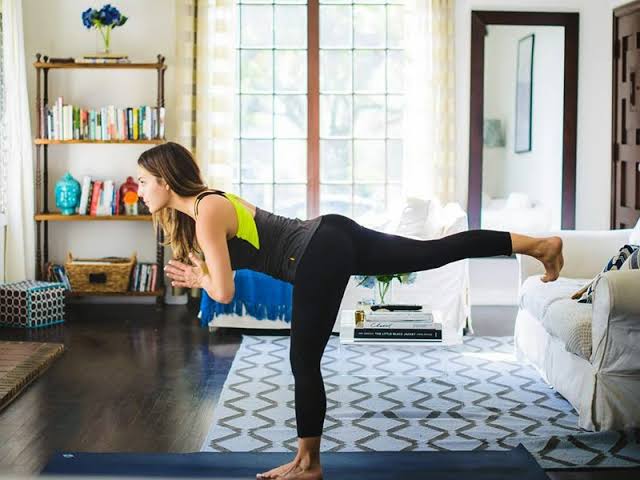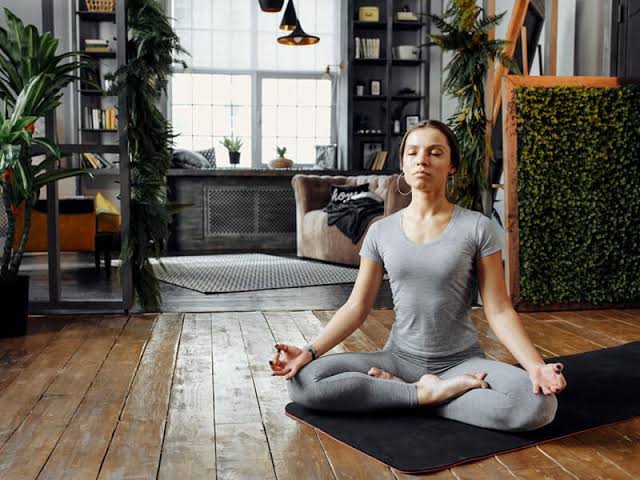Benefits of Yoga, Exercises you can do from home

Yoga is a practice that is more than 5,000 years old and was first known in India, although there are no records of who invented it. Today Yoga is a practice that has regained much strength and is practiced by many people of all ages around the world. Yoga is popularized as a form of physical exercise that is based on postures that allow better control of the mind and body that also improve the welfare of the body.
You may be interested in: Benefits of functional training
There are many types of yoga with different disciplines. But in this post we will focus on learning what the benefits of yoga are because you will also learn some of the best known yoga postures that you can practice in the comfort of your home.
What are the Benefits of Yoga?
There are already more than one hundred types of yoga, in the western world are known and practiced various styles that derive from Hatha Yoga, because it is one of the most dynamic. There are others that are more spiritual, such as Kundalini Yoga, and others that are more physical and demanding, such as Yoga Bikram, which takes place in a warm room. There is even a facial yoga to relax and tone the muscles of the face.
Yoga is a practice that helps to harmonize body and mind through very simple exercises. It should also be stressed that Yoga is not just a type of exercise, it is a lifestyle that heals, cares and also strengthens the body, mind and spirit.
Benefits of Yoga
Yoga as you already know is a practice that incorporates breathing exercises, meditation and poses designed to stimulate relaxation and reduce stress.
Reduces stress
Yoga is well known for its ability to release stress as it promotes relaxation of the body. The practice of yoga helps to reduce emotional distress, because it contributes to the decrease of cortisol secretion which is the main stress hormone.
With the first 10 weeks of practice you begin to see great results in relieving stress and anxiety. Studies have shown that people who regularly practice the three elements of yoga (posture, breathing, and meditation) are better able to regulate their heart rate variability.
This usually means that your heart rate is lower, giving your body the ability to respond to stress in a more flexible way.
Relieves anxiety
A large percentage of people who practice yoga do so as a way to deal with anxiety. Because they say it helps to find a sense of peace.
You can practice it with your pet.
Thanks to “Doga” you can practice yoga with your dog. Puppies can pose next to you, or you can use them as furry accessories. Although there are some feline yoga classes, cats seem to be more fond of interrupting yoga.
Improves flexibility, core stability and strengthens muscles
It’s natural to feel sexier as you become stronger and more self-confident (regardless of the exercise), but yoga methods that enhance sex go beyond other exercises because they not only tone muscles, but help improve flexibility, center stability, and strengthen pelvic floor muscles, which would translate into a firmer grip downward, and stronger orgasms.

Promotes General Well-Being
The practice of yoga allows you to find stillness and tranquility in a world consumed by chaos. The peace and tranquility achieved through the exercises produce a feeling of relaxation and relief. The meditation and deep breathing practices of yoga help to clear the mind and concentrate more.
More Strength and Flexibility
The fact that yoga focuses on strength training and flexibility is an incredible benefit to the health of your body. The postures are designed to strengthen the body from the inside out, so that you not only look good, but also feel good.
Yoga postures are built to strengthen the muscles that surround the spine, the very center of the body, which is the base from which everything else works. When the centre functions correctly, the posture improves, relieving pain in the back, shoulders and neck.
The digestive system recovers
When stretching in yoga is combined with a healthy and organic diet, it can relieve constipation, irritable bowel syndrome and acid reflux.
Basic Yoga Postures to Do at Home
If you have a hectic life and a full schedule that prevents you from attending Yoga classes you have nothing to worry about because in this post we will teach you some basic initiation poses that you can practice from home, and all you will need is comfortable clothes and a mat to perform the postures.
Start with abs.
It is not only an asana, it is a very ordinary but necessary exercise. Lie down with your back reclined, put the soles of your feet on the ground and go through one on top of the knee of the other. Put your hands on the nape of your neck and go up lifting diagonally with your elbow towards the opposite knee. Repeat this exercise 15 times on each side, elevating the exhalation.
Baby Posture
This pose begins by kneeling on your hands and knees. It rests and relaxes the toes, and stretches the knees over the hips. While exhaling, slowly lower the buttocks toward the heels, feeling that the coccyx extends from the back of the pelvis, then flexes the torso over the thighs, lengthening the back of the neck before the forehead rests gently on the floor.
Retract your arms to your thighs with the palms of your hands up and feel the weight of your shoulders extend your shoulder blades slightly.
Cobra Posture
The cobra posture is one of the most common in Yoga sessions. It is an extension of the spine and consequent stretching of the muscles of the abdominal area, and is usually done in combination with the posture of the child as they are complementary postures.
Lie on the mat face down with arms slightly apart from the body and hands down as well. Then do a breathing cycle to relax, and always do it through your nose. With the palms of the hands just below the shoulders and stretch the legs well and rest the instep of each foot on the mat. Then stretch your arms as far back as you can while flexing your back and tilting your head back as well. Try to hold the final position for 20 to 30 seconds.


 Medical Alert and Smart Home Integration
Medical Alert and Smart Home Integration  Cookies in Online Advertising
Cookies in Online Advertising  Top 5 Plumbing Myths Debunked
Top 5 Plumbing Myths Debunked  Data Storage Reliability and Durability
Data Storage Reliability and Durability  How Personal Injury Lawyers Assess
How Personal Injury Lawyers Assess  CBD in Treating Epilepsy
CBD in Treating Epilepsy